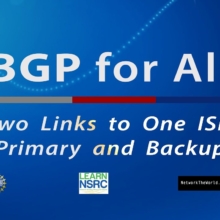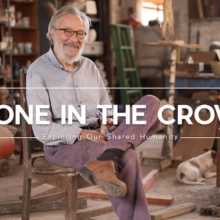William Fisher, CopyrightX: Lecture 10.1, Cultural Theory: Premises
Hello. I’m Terry Fisher. This is the 10th of a series
of 12 lectures on copyright. Links to the other
lectures in the series and the current
a version of the map that will accompany this
particular lectures are available through my home page, the
address of which is tfisher.org. As you know by now, there
are four main theories of intellectual property in general,
and copyright in particular. The fairness theory, finds
inspiration in the work of John Locke centers on the principle
that the law should be organized to provide authors and
inventors what they morally deserve. Somewhat more specifically, the
law, seen from this perspective, should award the property
interest or monetary rewards commensurate with
their creative efforts. The fairness approach has
disproportionate influence in the United States and other countries
influenced by the common law tradition, but finds some support
throughout the world.
The personality theory,
which finds inspiration in the work of Kant and Hegel,
is founded on the principle that intellectual
products are extensions of the personalities of their
creators, and that the law should be organized to respect and nourish
the psychic bonds between creators and their expressive products. The dimension of copyright law
that is most closely associated with personality theory is the set of
so-called moral rights, which are most generously recognized and
enforced in continental Europe, and in other jurisdictions influenced
by the civil law tradition.
The third approach is
the welfare theory, a branch of the broad philosophic
the tradition of utilitarianism. The welfare theory of copyright
starts with the proposition that intellectual products are public
goods, an unusual and especially important subset of products defined
by two related characteristics. They are both non-rivalrous
and non-excludable. Copyright law, seen from this
angle constitutes a mechanism employed by governments to
prevent such public goods from being produced in less than
socially optimal quantities. The general guideline that emerges
from this philosophic tradition is that the law should be adjusted
to combine optimally, on the one hand, incentives for
innovation, and on the other hand, mechanisms for ensuring that
the fruits of innovation can be consumed or reused by others.
This theory has gained in
strength in recent years. It is now the dominant
approach to copyright law, at least in the United States, in part
because of the resonance between it and the utilitarian tenor
of the Constitutional clause on which intellectual property
the right’s founded in the United States, and part because of this
the theory has been refined and popularized by an influential
group of scholars, some of whom have since become judges. We come, finally, to the fourth theory. This is currently the least
well-known and least influential of the approaches, but it is,
I think, growing in strength, both among scholars and among lawmakers. It centers on the principle
that copyright law, like other fields of law, should be
organized to foster and sustain a just and attractive culture.
The cultural theory incorporates some
aspects of the other three theories, but as we’ll see, also stands apart
from them on important dimensions. Like the welfare theory, it’s
prospective and consequential. In other words, it urges us to
create a legal framework that will enable or prompt people to
behave in ways that will give rise to a more attractive
society in the future. But it differs from welfare
theory in a fundamental respect. It’s not founded on the principle
of consumer sovereignty, the notion that we should measure people’s well-being by what they currently desire or loathe. In other words, the cultural theory
takes the risky and controversial position that people are not always
the best judges of their interests and that the law should
sometimes guide them in directions they are not
currently inclined to go.
Like the personality
theory, the cultural theory tries to identify in advance
fundamental human needs. However, as we’ll see,
the set of needs that figures in most current
versions of cultural theory is different from the set that
figures in personality theory. Cultural theory is
also much less willing to privilege the psychic bonds
between artists and their creations over all other considerations. Like the fairness theory, and
unlike the welfare theory, the cultural theory is intensely
concerned with justice.
However, it’s less interested in
individualized conceptions of justice– in other words, attempts to give
individual workers or authors what they have earned through
their labor– and more concerned with distributive
justice– in other words, ensuring that all persons are given
fair shares of material resources, and above all, fair access
to the opportunities necessary for full human flourishing. In the second segment
of this lecture, it will become apparent
that these differences in orientation prompt
advocates of cultural theory to recommend a pattern of reforms to
copyright law that is significantly different from the pattern commended
by any of the other approaches. As my tone undoubtedly conveys,
I find this approach to be the most congenial
and powerful of the four. The result is that my
presentation of this approach will be less dispassionate than were
my presentations of the other three. I’ll do my best at the end to identify
the main weaknesses of cultural theory, but it would be hopeless
for me to conceal the fact that I find it to be, on balance, the
most powerful of the four approaches.
Needless to say, you should
make your judgments concerning the merits and
demerits of this perspective. One of the reasons why I have
waited until now to present this argument to you
is to ensure that you are familiar with the rival approaches
and their doctrinal implications, and thus inoculated
against my favoritism. Here’s how I plan to
organize my presentation. In the first segment
of the lecture, I will outline the premises of this approach. In the second segment, I
will canvas various issues in copyright law, with
which you are now familiar, and suggest how cultural
theory might illuminate them.
Third, I will address
a few possible reforms outside of copyright law that the
the cultural theory might commend, and then discuss the principal limitations
and vulnerabilities of this argument. So let’s begin. At the outset, it should be emphasized
that, like each of the other three approaches, cultural
the theory is best understood as a family of related arguments, not
a single, tightly-knit, determinant argument. Put differently, it’s
an orientation, a way of thinking about life, culture,
and law, not an algorithm.
Partly as a result, people who
adopt this approach disagree among themselves, just
as, as we have seen, the economists who dominate
the welfare approach, and the philosophers who
dominate the fairness approach, also disagree among themselves. Who, then, are the people who have
contributed to the cultural theory? They are surely not limited to law. Indeed, most of the inspiration for
this approach comes from outside law. In philosophy, it has deep
roots in the work of Aristotle and more modern expression in the
arguments of Amartya Sen and Martha Nussbaum. In political theory, roots can be found
in the writings of the 18th-century commonwealth men, such
as Trenchard and Gordon in England, the early Karl Marx,
Alexis de Tocqueville, Hannah Arendt, and modern communitarian theorists. Recently, the work of
several social psychologists, including Edward Deci, Richard Ryan,
Martin Seligman, and Christopher Atman, have lent substantial
support to this perspective. Among legal scholars, and specifically
among the subset of legal scholars who focus on intellectual
property, important contributors include Keith Aoki, Yochai Benkler,
Julie Cohen, Neil Netanel, Madhavi Sunder, Talha Syed.
Some of their works
are listed on the map. If you’re curious about their
perspectives, follow the links. My work in this area began with
an essay I wrote on fair use in 1988 and has continued to guide my
exploration of different dimensions of intellectual property ever since. Indeed, I find myself closer to this
approach now than I did a decade ago. During the remainder
of this lecture, I will focus on my particular
variant of cultural theory. These other scholars are, as I
say, pursuing analogous projects, but likely none would agree
with all aspects of my argument. The most fundamental of the premises
upon which the argument is based is the proposition that
there exists such a thing as human nature– it’s hard to
discern, but real and stable.
Because of their nature, people
flourish under some conditions and suffer, or atrophy, under others. From those observations
emerges a normative guideline. Social and political
institutions, including law, should be organized to
facilitate human flourishing. Eight conditions contribute
to human flourishing. Not all eight are essential
to a full and satisfying life. Indeed it’s doubtful that anyone
has ever fully experienced, on a sustained basis, all eight. Life isn’t perfect. But these are the
components of a good life. The most obvious is life itself. Flourishing is possible only
if you are alive– somewhat more specifically if you can live a life of normal length.
Nuances lurk in the adjective
“normal,” but we need not tarry to consider them here. The second, nearly as
obvious, is health. Illness impairs flourishing. Freedom from psychic
and physical pain is one of the conditions that
contribute to living well. As Martha Nussbaum observes,
health, in this sense, includes reproductive health. Now things begin to get more
subtle and controversial. A substantial degree of autonomy
is important to human flourishing. No one, of course, is wholly
self-made or self-directed, but a life without a substantial
degree of self-determination is a life not fully lived. George Kateb, the person from whom
I first learned political theory, put the point memorably. “One’s dignity resides in
being, to some important degree, a person of one’s own creating, making,
choosing, rather than being merely a creature or a socially
manufactured, conditioned, manipulated thing, half-animal and half-mechanical,
and therefore wholly socialized.” Kateb, in this passage,
was drawing in part on the work of John
Stuart Mill, who also emphasized the constitutive
value of choice.
The same theme figures
heavily in the writings of many other liberal
theorists, including John Rawls and Ronald Dworkin. It also infuses Yochai
Benkler’s commentaries on the affordances enabled by
participation in information networks. It’s important to note three
refinements of this idea. First, autonomy does not mean
freedom from social connections. On the contrary, it means, rather, that
the bonds and communities through which we define ourselves are at least partly
chosen, not inherited or coerced.
Second, the dimension of
the autonomy that turns out to contribute most to well-being
is the subjective feeling of self-determination,
which is only partly dependent on the objective
several options that one has. Third, autonomy is not only
makes one feel better. It’s also adaptive. Social psychologists have found
that autonomous motivation, meaning motivations arising out of voluntary
choice, increase job performance, particularly when the task at issue
is complex and requires creativity. Of course, one can have too much
of a good thing, even autonomy, as Barry Schwartz has shown. But a substantial degree
of self-determination is key to the good life. The fourth of the conditions
conducive to flourishing is engagement, by which
I mean participation in shaping an important
dimension of one’s environment. Many groups of theorists
have emphasized one or another aspect of this principle. Karl Marx, for example, placed great
weight in his insightful early writings on engagement in work. People ought to have access to what
he called meaningful work, by which he meant work that requires
skill and concentration present the laborer with
challenges and problems he can overcome only through the
exercise of initiative and creativity, and is part of a larger project
he considers socially valuable and must take into account
in making his decisions.

Notice that the fact
that the job is connected to a socially valuable project
is part of this vision, but not the whole of it. Fulfillment comes only through
participation in the choices that determine the direction of the
venture and whether it succeeds. That’s where engagement lies. Notice also the beneficial role
played in this vision by risk. The certainty that a venture will
succeed innervates engagement. But work is not the only arena in which
one can find fulfilling engagement. Another is politics. This theme figured
prominently in the work of classical Republican
political theorists, including the pamphleteers
and activists who helped power the American Revolution. They celebrated what they called
civic virtue, a key component of which was active participation in politics. But not any sort of
participation– rather, they privileged participation
in a particular posture– altruistic, deliberative, genuinely
committed to the welfare of the polity as a whole, not to the advancement of
self-interest or factional interest.
Again, we see the conjoining
of involvement, choice, and, last but not least, commitment
to a larger enterprise one believes to be socially beneficial. In Martin Seligman’s words, “using
one’s signature strengths and talents to belong to and serve
something bigger than oneself.” Within legal scholarship,
this theme found expression in a highly influential set of
articles during the 1980s and 1990s that sought to reorient constitutional
law and administrative law around the idea of altruistic,
deliberative citizenship. Key figures in that surge were
Frank Michelman and Cass Sunstein.
Sunstein later went on to
become a central figure in the Obama administration. Yet another arena for self-fulfilling
engagement is culture itself. We live today in a cloud
of symbols and images that, like our jobs and our policies,
are all too often out of our control. The result is cultural alienation
analogous to alienation in the workplace. Retaking some degree of
responsibility and control for the shape of that
semiotic environment is another way of achieving engagement. Each of these groups of
theorists argued vigorously for the benefits,
individual and collective, of the particular kind of
engagement they celebrated. My view is that no one of
these forms of participation has pride of place and that it’s
hopeless to try to do them all.
There just aren’t enough weekends. The more general insight,
latent in all three variants, is that active, risky,
altruistic engagement in the shaping of a significant
aspect of one’s world is key to human flourishing. Closely related to engagement in
this sense is self-expression. Projecting oneself
into or onto the world has long been regarded as constitutive. It’s at this point that the
cultural theory of copyright overlaps most clearly with
the personality theory. Indeed, the reflections I
discussed in the second lecture by T. H. Green and others concerning the
importance of preserving opportunities for self-expression could be simply
incorporated here by reference. A more recent manifestation
of the same theme can be found in the
work of Larry Lessig, in particular his book on the remix.
Competence, we know intuitively, is
also crucial to human flourishing. We feel better, and
we do better when we have a sense that we are
capable of performing the tasks we address– not that we
are certain of success, but that we have the
requisite talents and skills. A large body of literature in social
psychology confirms this intuition. A sense of competence
is key to learning, and a sense that one is incompetent is
strongly correlated with depression. Again, the subjective
feeling of competence is at least as important as the reality
for both performance and well-being. This fact creates interesting
complications and possibilities when combined with the fact
that assessments of competence are often distorted in systematic ways. Unskilled people, psychologists
tell us, typically overestimate their competence, while highly
skilled people typically underestimate their competence. But this is a nuance,
not the core point. The seventh theme in the list
should not be surprising. We flourish through
connection with others.
We atrophy alone. The vocabulary employed to
express this age-old insight in different disciplines varies. A philosopher, such as Nussbaum,
might use the term “affiliation.” The psychologists, Deci and
Ryan, use the term “relatedness” and place it on par with autonomy and
competence as funda amental human need. In political theory, the theme
finds its clearest expression in communitarian arguments. Finally, privacy– on this
issue, like self-expression, the cultural approach of copyright
overlaps with the personality theory. Both invite attention
to the fundamental human need for relief from the
crowd, access to settings conducive to experimentation,
and intimacy. The list on your screen
is rough and tentative. It is grounded in millennia
of reflection and experience, but it is still being
tested and refined. Date categories are not watertight. On the contrary, these conditions
reinforce and run into one another. That, in turn, means that
the set of functionings essential to human flourishing could
be organized somewhat differently. But with those qualifications,
there’s remarkable convergence by scholars working in
many disciplines concerning the importance of these
eight things to a good life.
Having cataloged briefly the conditions
that contribute to human flourishing, the next issue is how
widely available we should strive to make those conditions. An enormous literature within political
theory addresses that question. Many different criteria
have been proposed for how much equality or inequality concerning these or any other resources is morally justified. Three of the many contending
positions are listed on the map. Exploring this literature
would take us very far afield. Fortunately, for present
purposes, we need not do so because there’s broad,
although, of course, not unanimous, agreement among the contending
camps that all societies today are characterized by unjustifiably
high levels of inequality. In other words, our task
for the foreseeable future is to adjust our institutions to make the eight conditions constitutive of a good life more
widely and equally available. At some point, the issue of
just how equality will become salient, but unfortunately,
not in the near term. So when considering
modifications of copyright law, we can postpone efforts to resolve
this fundamental issue decisively and instead commit ourselves
to substantial movement in the direction of equality. How, then, could we make a good
life more widely available? Many possible initiatives
undoubtedly spring to mind.
Suppress both organized
and disorganized violence. Increase the availability
of health care and vaccines. Reorganize workplaces to
increase opportunities for genuine participation, and so forth. It would be foolish to
attempt here to itemize all of the political
and legal reforms that would help advance the
goals I have posited. Although some initiatives are
obvious, others are not at all. I’m just now beginning work on
a book, tentatively entitled Good Life, Good Law, that will attempt a
partial survey of this large landscape. It will likely take years. For the time being, we can
and should limit our attention to dimensions of reform
that are likely to implicate the subject at hand– namely, copyright. As you might expect,
those dimensions all involve improving our
culture, broadly defined.
Four dimensions of culture seem
especially closely connected to the realization of the aspirations
we have identified thus far. The first is cultural diversity. Diversity fosters human flourishing
in many interlocking ways. It increases both the fact
and the experience of choice. Thus, at least if those choices concern
things that matter to the chooser, diversity increases autonomy. Diversity also increases
invitations and opportunities for self-expression and engagement
in other dimensions of the good life. How these
themes reinforce one another was recognized long ago by Mill. “The more multifarious the lifestyles
and ideas on public display in a society, the more
each of its members must decide for herself what
to think and how to act, thereby developing her own
mental and moral faculties, and rendering the culture as a
whole even more rich, diversified, and animating.” For many of the same reasons,
a rich artistic tradition sustains opportunities for
flourishing of many sorts.
This point was made
crisply by Ronald Dworkin, one of the foremost
Anglo-American legal theorists. “The more complex and resonant
the shared language of a culture, the richer it is in the raw materials of
representation, metaphor, and allusion, the more opportunities for creativity
and subtlety in communication and thought it affords the
members of the culture.” This claim, and the related notion
that governments should actively seek to foster a rich
artistic tradition, is unlikely to shock Europeans,
but it is far from universally accepted in the United States
or many other countries. It should be. Third, education, it turns out,
is the linchpin of the good life. Autonomy, engagement,
self-expression, and competence are all dependent upon the
kind of knowledge and skills that only education can provide. Recognizing that education is the
precondition for many dimensions of human flourishing has
two important implications. First, it highlights the
importance of ensuring that education is wide–
ideally, universally– available.
Second, it should guide the reform
of extant educational systems. Our goal should be to
enable and encourage lifelong learning that supports
creativity, competence, and confidence. We currently fall far short of that. Technology is rapidly
expanding our capacity to construct a system for vibrant,
empowering, lifelong education available to people worldwide. We should adjust copyright law to
facilitate that project, not impede it. The fourth dimension of a nourishing
culture is democracy– by this, I mean, to the extent feasible,
participatory democracy, not representative democracy. There are two aspects of this theme. The first and more familiar
is political democracy. There are, of course,
well-known reasons grounded in considerations of legitimacy
and the quality of governance for vesting political power
in the people at large.
I will not rehearse
those arguments here. For present purposes, I’m more
concerned with a less instrumental value of political democracy, the value
that most impressed Tocqueville when he visited the United States in
the early 19th century– specifically, the beneficial effect
of political engagement with the people who
participate in governance. Active citizenship, in short, is
good for the heart and the soul, as well as the polity. For essentially the
same reason, we should strive to increase participatory
democracy concerning cultural meanings, what John
Fiske, Michael Madow, and Jack Balkan have called it semiotic democracy.
This theme merits some more elaboration. During the 19th and 20th centuries,
the cloud of images and symbols I mentioned a minute ago gradually,
then rapidly, became increasingly dense. Equally important, control
over the content of that cloud became increasingly concentrated in
fewer and fewer companies, advertising houses, and political consultants
located in a few countries. Semiotic power, in other words,
was held by fewer and fewer people. To be sure, the concentration
was never total. As cultural populists point out,
opportunities for cultural resistance– for recoding centrally-fashioned
and distributed symbols– survived.
But those opportunities shrank, and
the refashioned images rarely have the currency of the originals. Information technology not
only is enabling radically new forms of education,
as I just mentioned. It is also beginning
to reverse this trend toward the concentration
of semiotic power. Digital technologies are enabling
an ever-larger group of people to engage in remixing of cultural forms. Surveys done by my colleagues
John Palfrey and Erst Gosser suggest that, already, roughly
one in four young people worldwide now engage in
remixing digital content into their artistic creations. That number will surely climb. This is a trend that should
be celebrated and facilitated, not denounced. It implicates favorably several of
the dimensions of the good life. Specifically, it expands opportunities
for autonomy, engagement, self-expression,
competence, and connection. Now, to be sure, it’s
crucial that we not lose sight of the importance
of preserving the incentives and rewards for the creation
of cultural artifacts that others can then remix. But there may be ways
of tuning copyright law to reconcile these competing goals.
That possibility and many other
potential reforms of the copyright system, which we’ll take up after the break.











